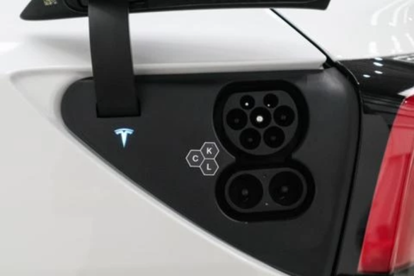
EV battery care guide
Here's our guide on how to care for your new electric vehicle's battery, including our best practice on how to make your battery last.
The battery in your EV
The battery in your EV can be likened to your vehicle's fuel source. By replacing the fuel tank used by combustion engine vehicles, EVs have their own source of electricity within the vehicle. This allows the vehicle to emit no tailpipe emissions, whilst being as easy to recharge as your mobile phone. In fact, most EV batteries use the same lithium-ion battery technology that is found in your mobile phone, laptop or electric shaver. Battery technology has progressed over the last decade, allowing EVs to travel over 300+ miles on a single charge. However, without the proper care, EV batteries can degrade over your ownership period - so it's important to follow some guidance on how to care for your battery, just as you would with other components in a traditional combustion engine car.

Our best practice tips
1. Keep the battery charged between 20% and 80%
It's usually advised by manufacturers to keep your battery charge state between 20% and 80% at all times, to avoid any strain on the battery at extreme charge levels. Try and avoid charging all the way to 100%, or letting it drop to 0% (which is advisable anyway to avoid being stranded!) and maintain a moderate battery level. When driving longer distances, it's usually fine to charge to 100% if it's done occasionally, but you might choose to make a short stop off at a rapid charger to avoid running out of battery, or remain topped up for your next journey. It's also worth noting that your EV's navigation system may provide options for charging stops along your route.
2. Limit rapid charging
Rapid charging is extremely helpful to keep you on the road when you are low on charge. However, rapid charging frequently can place extra strain on the battery. Due to the high charging speeds, rapid charging can cause your battery to heat up to higher than normal levels, and therefore degrading the battery quicker. Slower charging speeds eliminate this issue, and can be more convenient. Most times, your EV can be set to limit charging speeds if desired, allowing you to choose how fast your EV charges. This will limit charging speeds even if you are using a rapid charger, found all around the country at car parks, service stations and hotels.
3. Keep your EV at the right temperature
It's important to avoid extreme temperatures when charging your EV to ensure your battery keeps in good health. At extremely hot temperatures, the battery can expand and contract - which during charging, can cause the battery to degrade faster. At extremely cold temperatures, the electrolyte in the battery can freeze - causing damage to the internal structure of the battery. Most EVs have technology to manage the temperature when charging, but keeping the vehicle in a temperature controlled environment is highly recommended when charging to avoid any complications down the line.
4. Precondition your battery
Depending on whether the temperature of the battery is hot or cold, most EVs today can pre-condition the battery in preparation for driving or charging. This means that the battery is heated or cooled to an ideal temperature for optimal efficiency. This can usually be done ad-hoc via the EVs infotainment system or through your EV's mobile app, or can be scheduled for specific periods. Sometimes, an EV will automatically pre-condition before charging anyway, making it stress-free for new owners.
5. Avoiding high speeds for long periods
High speed and long distance driving uses more energy in EVs, as both the battery and the motor needs that energy to maintain speed. The faster the vehicle goes, the quicker the battery depletes to maintain the power needed by the engine. As the battery depletes at a higher rate than driving slower, this can cause the battery's internal temperature to rise - degrading the battery over time. Therefore, it's advised to find a route more suitable to an EV, driving at speeds between 40-65 mph. Your EVs navigation may have an option for a more efficient route, saving you range whilst preserving your battery health.